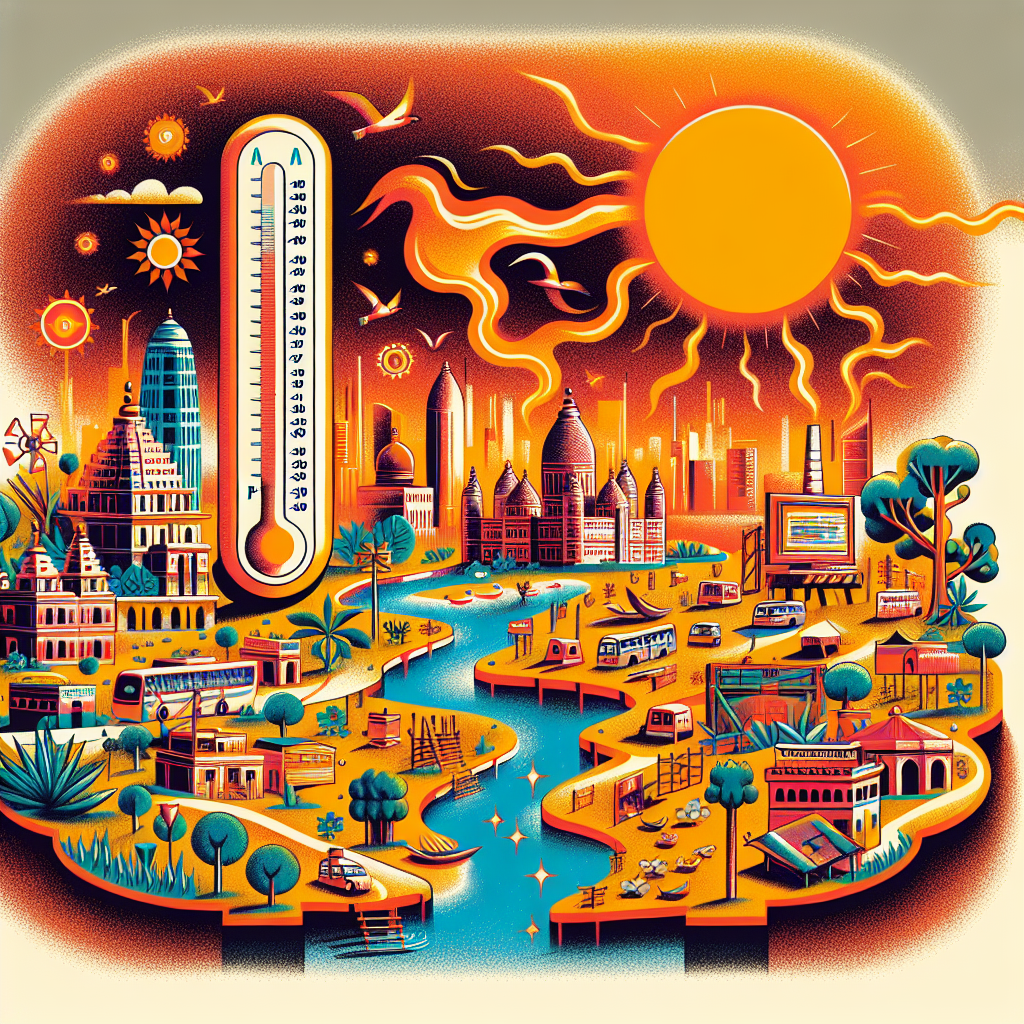The Impact of Rising Temperatures on Prayagraj’s Environment and Lifestyle
Prayagraj, a historical city located at the confluence of the Ganges, Yamuna, and Saraswati rivers in India, has long been a hub of culture, religion, and education. However, like many regions around the globe, Prayagraj is facing the critical challenge posed by rising temperatures due to climate change. This phenomenon is not just a distant threat; it is a reality that is already impacting the environment and lifestyle of its residents.
1. Climate Change and Temperature Rise
In recent years, Prayagraj has experienced an upward trend in average temperatures, with significant fluctuations during both summer and winter months. According to meteorological data, the city has reported increased frequency of heatwaves, leading to discomfort and posing health risks to its population. The average summer temperatures, once manageable, now often breach the 45°C mark, pushing residents to rethink their daily activities and schedules.
2. Environmental Ramifications
A. Altered Ecosystems
The rising temperatures are affecting the local ecosystems significantly. The delicate balance of flora and fauna in and around the region is under threat. The rivers that hold sacred cultural significance are also feeling the impact—rising temperatures can lead to reduced water flow and increased evaporation rates, affecting aquatic life and the biodiversity that relies on these habitats. The flora in the region, including the iconic Banyan and Peepal trees, is also struggling to cope with extreme heat and altered rainfall patterns, impacting food sources for local wildlife.
B. Air Quality Deterioration
As temperatures rise, so does the production of air pollutants. Higher heat levels can exacerbate the formation of ground-level ozone, a harmful air pollutant. This deterioration in air quality poses an increased health risk, particularly for vulnerable groups such as children and the elderly, leading to respiratory issues and allergies. Prayagraj’s urban areas already contend with pollution from vehicles and industrial activities; rising temperatures can further intensify this crisis.
3. Societal Impact on Lifestyle
A. Health Concerns
The health implications of rising temperatures are already being felt by the residents of Prayagraj. Heat-related illnesses, including heatstroke and dehydration, are becoming more frequent. The healthcare system is grappling with the increased patient inflow during peak summer months. Moreover, the psychological impacts—stress and anxiety related to extreme weather—are also mounting, resulting in an overall decline in well-being.
B. Changes in Daily Life
The lifestyle of Prayagraj’s residents is undergoing transformations as they adapt to the new climatic realities. Traditional morning and evening activities are increasingly being adjusted to avoid the heat of the day. For instance, many locals now prefer to conduct outdoor activities early in the morning or later in the evening. School hours have been restructured to accommodate the rising temperatures, impacting students’ routines and family dynamics.
C. Economic Implications
Agriculture, a primary source of livelihood for many in Prayagraj, is at risk due to erratic weather patterns and increasing temperatures. Staple crops may yield less, threatening food security and farmer incomes, leading to economic instability in the region. The tourism industry, heavily reliant on Prayagraj’s rich cultural heritage and religious significance, might also experience downturns as visitors may be deterred by extreme heat during traditional pilgrimage seasons like Kumbh Mela.
4. Mitigation and Adaptation Efforts
In light of these challenges, proactive measures are essential. Local government initiatives aimed at enhancing urban green cover through tree plantations can help mitigate the heat island effect prevalent in cities. Increased public awareness about water conservation and sustainable practices is crucial for preserving the precious water resources that are dwindling in quantity due to higher evaporation rates.
Community-led efforts can also play a vital role in fostering a culture of resilience among residents, promoting workshops on health, nutrition, and sustainable farming techniques to adapt to the changing climate.
Conclusion
The rising temperatures in Prayagraj are not merely a statistic; they are a reality that is redefining the city’s environmental landscape and the lifestyles of its inhabitants. There is an urgent need for collective action to address these challenges through awareness, adaptation, and innovation. By coming together, the residents of Prayagraj can not only mitigate the adverse effects of rising temperatures but also ensure a sustainable and livable environment for future generations. As the city stands at the crossroads of tradition and modernity, its response to climate change will shape its legacy in the years to come.

